
At times I wonder about the future of small-scale farming: with large farming operations buying up small farms and effectively putting smaller farmers out to pasture, why would someone voluntarily choose what is, at best, a hardscrabble lifestyle? It’s certainly not for the prestige, the ease, or the security (or the healthcare coverage)…but now that I’ve been a full-time farmer, I better understand why certain individuals still choose to farm.
As I write this, I sit looking out at the back pastures, so green and full of life. The grass grows without any supplemental watering – the morning dew is heavy and provides an abundance of moisture for the greenery. The trees and bushes are leafy, and the plants are budding and blooming (according to their own internal clocks). This property is simply buzzing with living creatures – literally and figuratively.
The chicks are growing fast, enjoying their days out in their secure tractors, and soon, they’ll be staying in the coop at night. They sun themselves, dustbathe, and nibble the pasture greens as they choose. More chicks are due to hatch soon and will join the juveniles in tractors when they’re a few days old (and the weather cooperates).
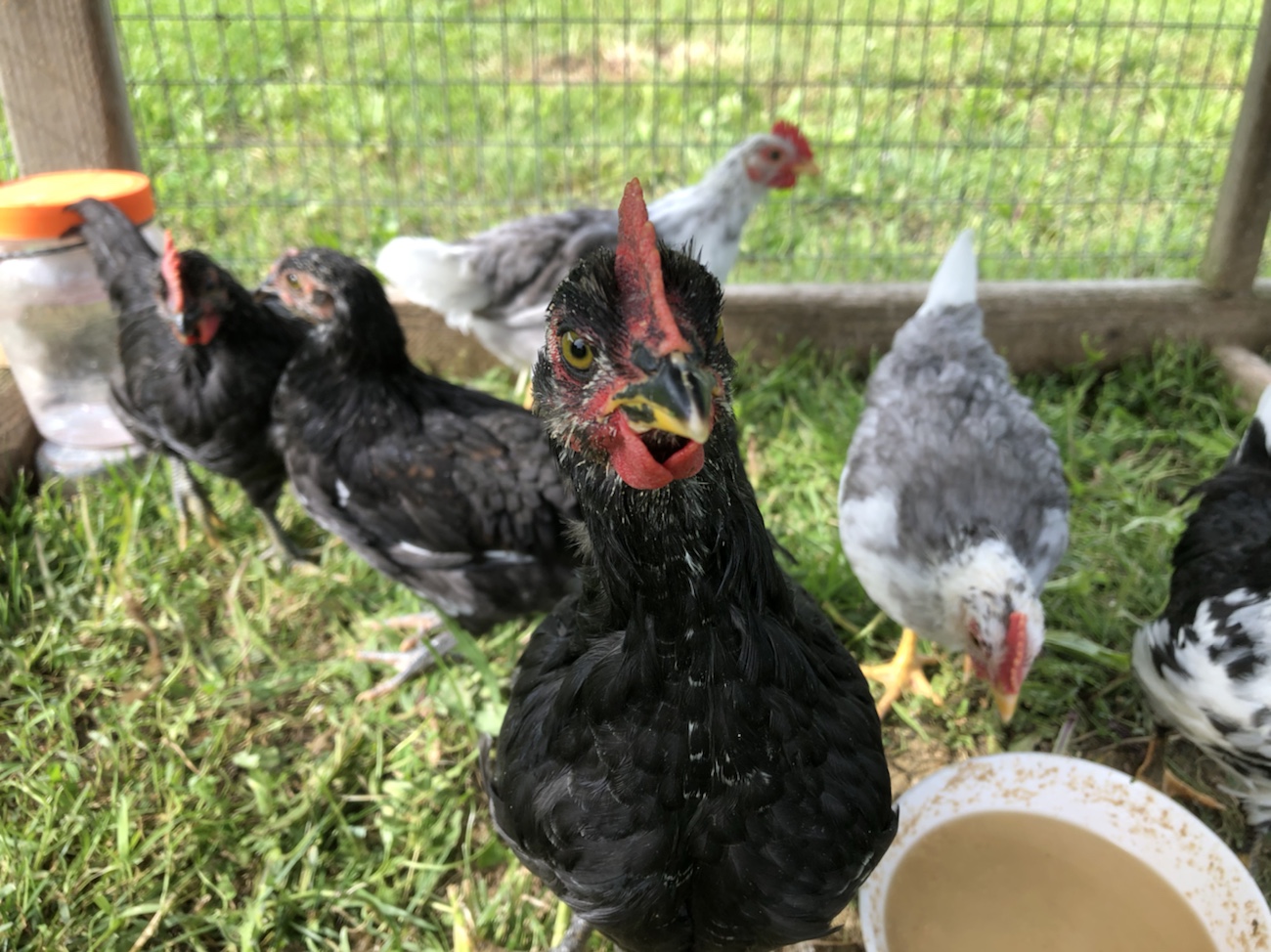
The juvenile duck group (fawn and white Runners, a splash Swedish, a Buff Orpington, and a diminutive Mallard) have been living in a secure hoop tractor with their own personal-sized pool (it’s one of those black plastic mixing tubs from Lowe’s), moved daily. I think there may be 2 Runner drakes and 1 duck (based on how loud she is), I’m hoping both the Swedish and the Buff are also ducks, and I’m reasonably confident that the Mallard is a duck, too. They’re nearly fully feathered and each is lovely in its own way.
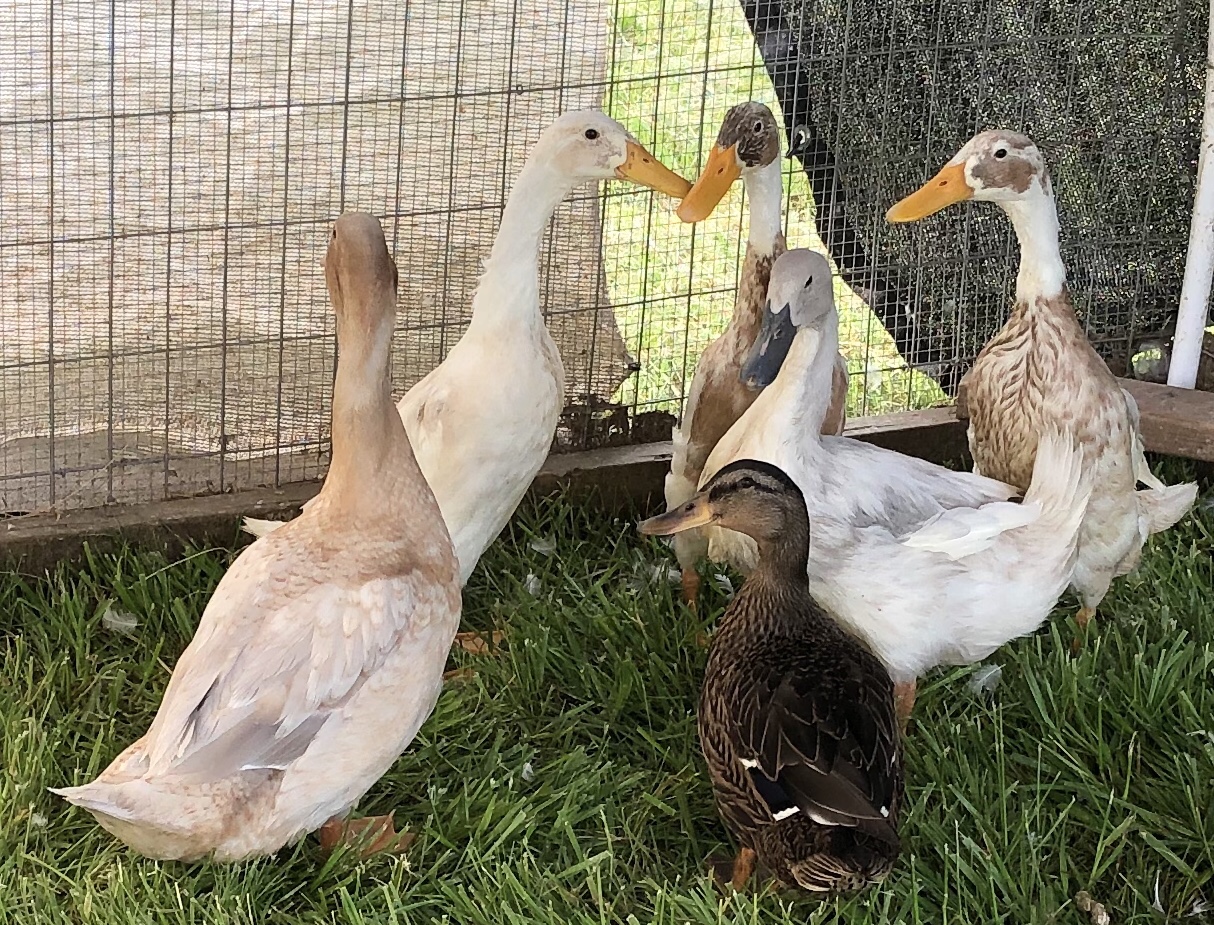
The goslings are also putting on impressive size. The babies vary in size, with the last hatcher (a full day behind) lagging in growth compared to the others. One of the girls hatched with a misaligned bill (called a crossbeak), and it has become more pronounced as she’s grown, but she’s one of the biggest goslings, happy, and very able to eat, so I’m optimistic that she’ll have a good life, even with a noticeable cosmetic imperfection. She is beautiful and has a big personality, and I intend to help her live her life to the fullest. It’s just too bad that waterfowl orthodontia isn’t available.
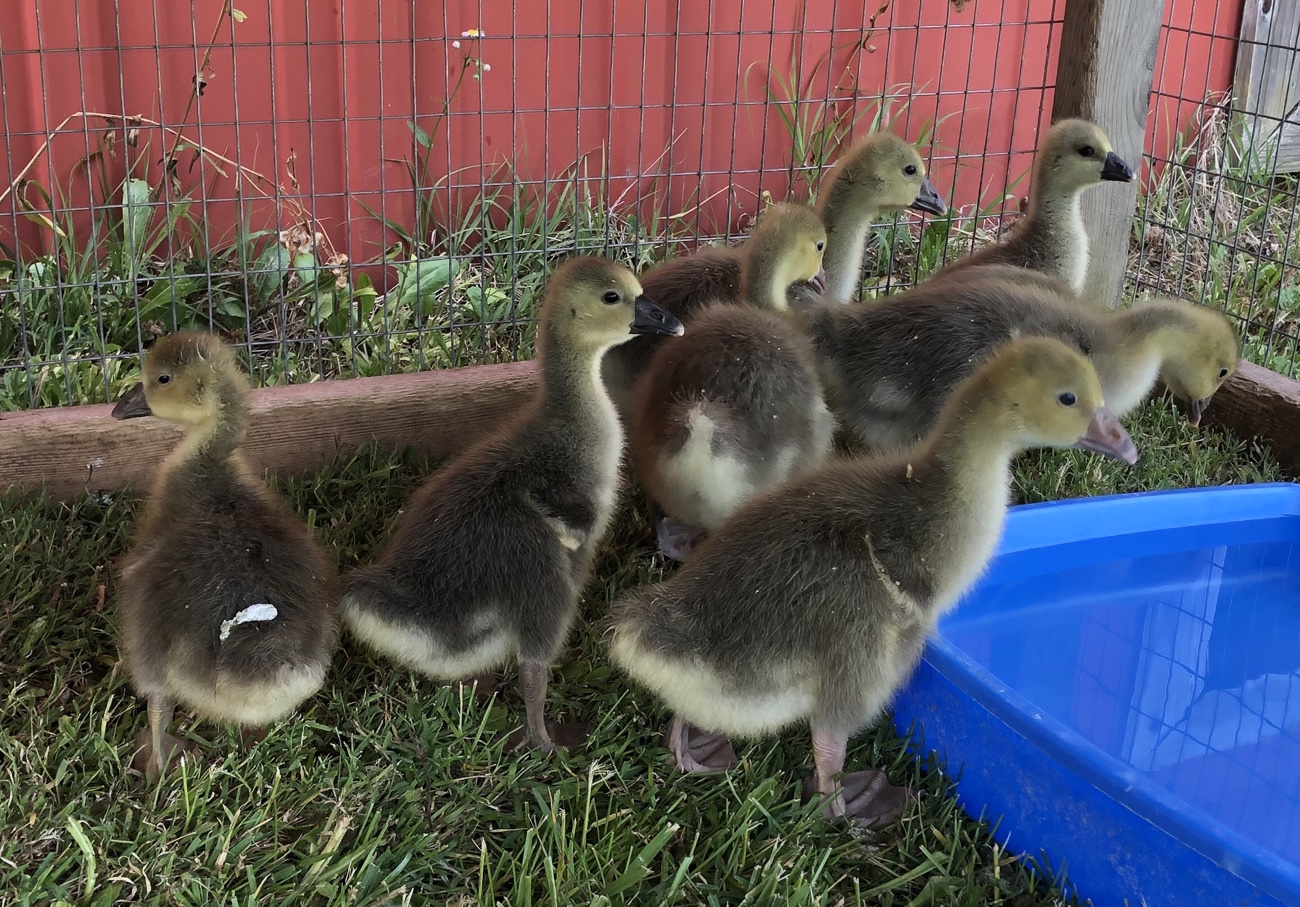
The pasture pigs are doing remarkably well on pasture, enjoying the greens and mud (and worms in the mud), and taking lengthy naps in the sunshine. With drier weather lately, they seem less enthusiastic about rooting, and their paddocks haven’t turned into the mud pits that appeared during the rainstorms…and that means they don’t have to be moved to new pasture quite as often. We recently trimmed up some pine trees and the pigs stripped the needles off the branches like they were candy. Pine needles are high in vitamin C, so maybe they’re healthy eaters?
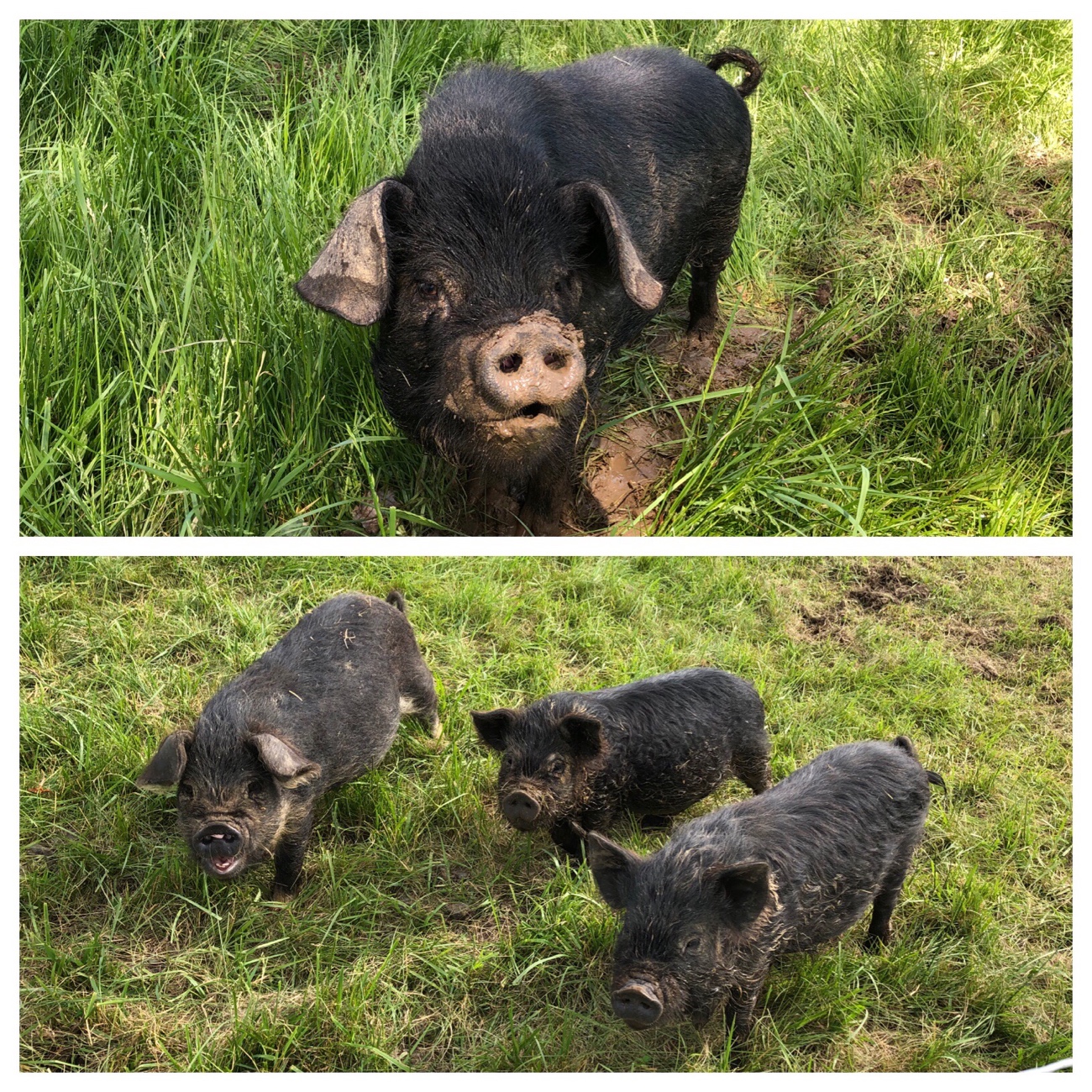
New smooth sumac trees have appeared, and with them, my hopes of harvesting even more berries later this summer for wine have risen.

Also, while clearing some wayward brush out of an area, I discovered a wild-growing lemon balm – very close to where I found the lemon balm plant that was the progenitor of all the plants I currently have in pots. The wild volunteer is big and healthy, and I plan to leave it where it is unless it becomes clear that it’s at risk of being damaged. My potted lemon balm plants are also doing well, as are the seedlings that grew from the seeds the mature plants dropped last fall. I anticipate a very healthy crop of the fragrant herb this year – and wine, syrup, jelly, tea!
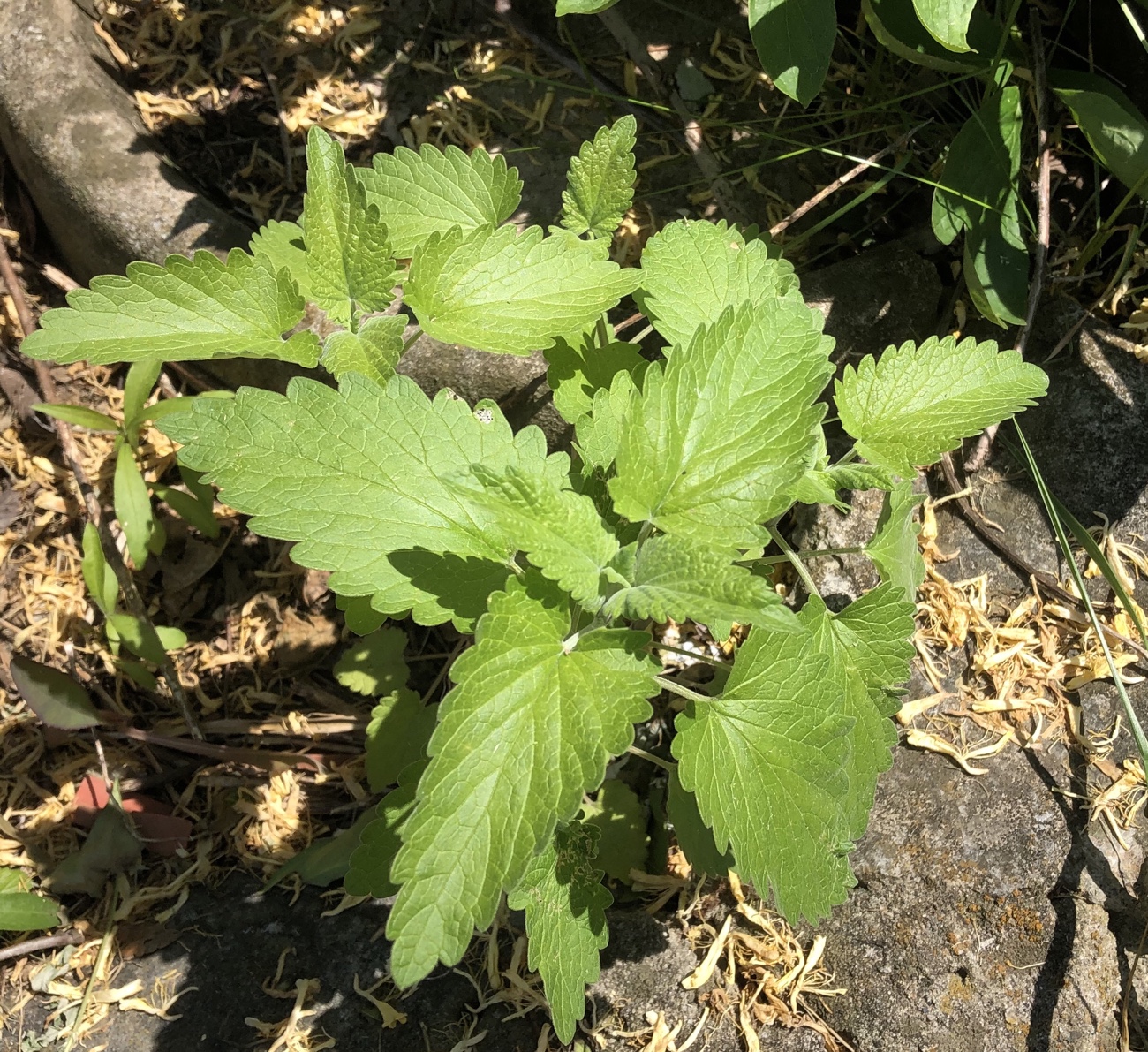
I’m also happy to report that the mulberry tree seems to be on track for a good year, too. Last year, it developed many green berries and was looking so promising…but with unusually dry weather that summer, the berries withered on the branch and I ended up with none for making water kefir, syrup, or wine.
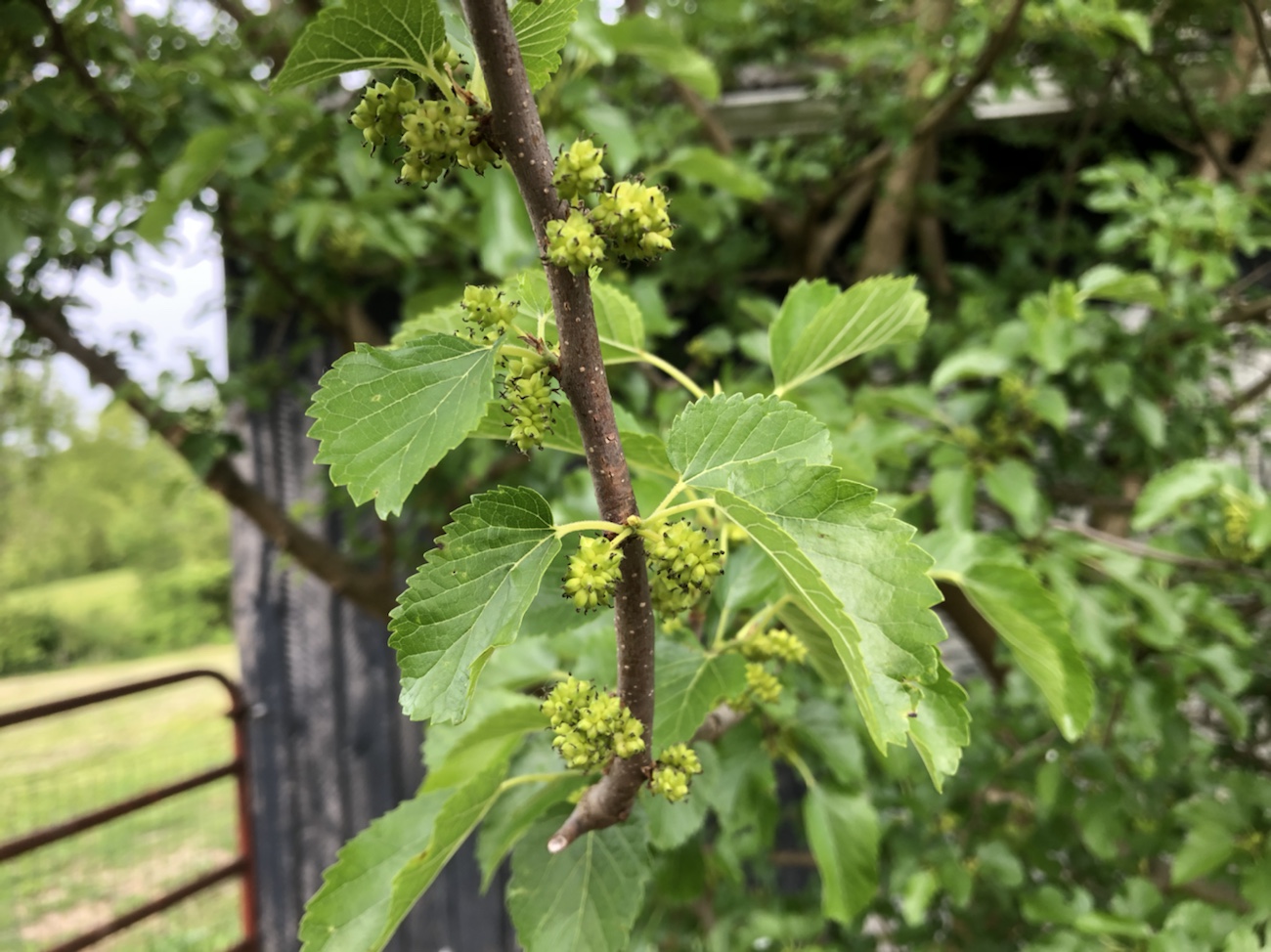
The same happened with the elderberries: the flowers were plentiful (and I harvested some for wine and syrup, taking care to leave plenty on the plants), but the berries didn’t make it to ripening. Accordingly, my plans for elderberry beverages went out the window.
There’s so much life here: birds, bugs, plants, animals. From the tiniest scarlet spider, nestled into its web in the grass, to the towering silver maple tree, I see life everywhere I look. The birds are busy building their nests and sitting on their eggs; the bugs are looking for vegetation (or other bugs) to eat; the plants are basking in the sunshine – making their own food, as well as producing oxygen and fruit and/or seeds to propagate themselves; and the other animals are growing and enjoying the fruits of this chemical-free sea of green. It’s inspiring, relaxing, and captivating to be here.
Sadly, not all of our neighbors refrain from using chemicals on their land, even where they have livestock. For example, a neighbor recently sprayed their fence lines with what was most likely herbicide: it smelled pungently unpleasant and sharply “chemical” in nature as it drifted in the breeze toward us. There are conventional farms raising GMO crops like soy, corn, and canola around us, too, and when they spray their chemicals (fertilizer and herbicide), the air is thick with fumes – especially on humid days, when it just hangs in the air. While we can control what we do on our own piece of property, we’re surrounded by people who don’t care about the environment or, apparently, other people. It seems to be the state of the world these days: self-absorption and the all-consuming pursuit of money. I’m not going to change that, but I can call it like I see it.
In my own little oasis, I don’t have to worry about potentially harmful herbicides or insecticides on my berries, flowers, grass, or pasture greens; if I want to eat a mulberry right off the tree, I can do that (hoping no little bird pooped on it at some point). I can keep the grass a little longer to provide a place for the craneflies – mosquito eaters – to breed and for the fireflies to find their mates (and put on a spellbinding show while they’re at it). Instead of burning brush piles, I leave them so that small animals, like wild rabbits, have a safe place to hide from predators, and useful wild plants like elderberries, blackberries, and honeysuckle can grow.
Despite the lack of progress on halting climate change, the absence of social justice on many fronts, and the failure of many, if not most, people to care about what’s going on in the world besides what’s in front of their noses (and only if it directly affects them in some way), I can still find small joys on my own farm…like incubating. Just this morning, I discovered that the first blue Runner duckling had emerged into this world from the confines of its (also blue) egg. Today, I’m choosing to focus on this tiny miracle unfolding, again, in front of me, and being thankful that I can be here to see it.
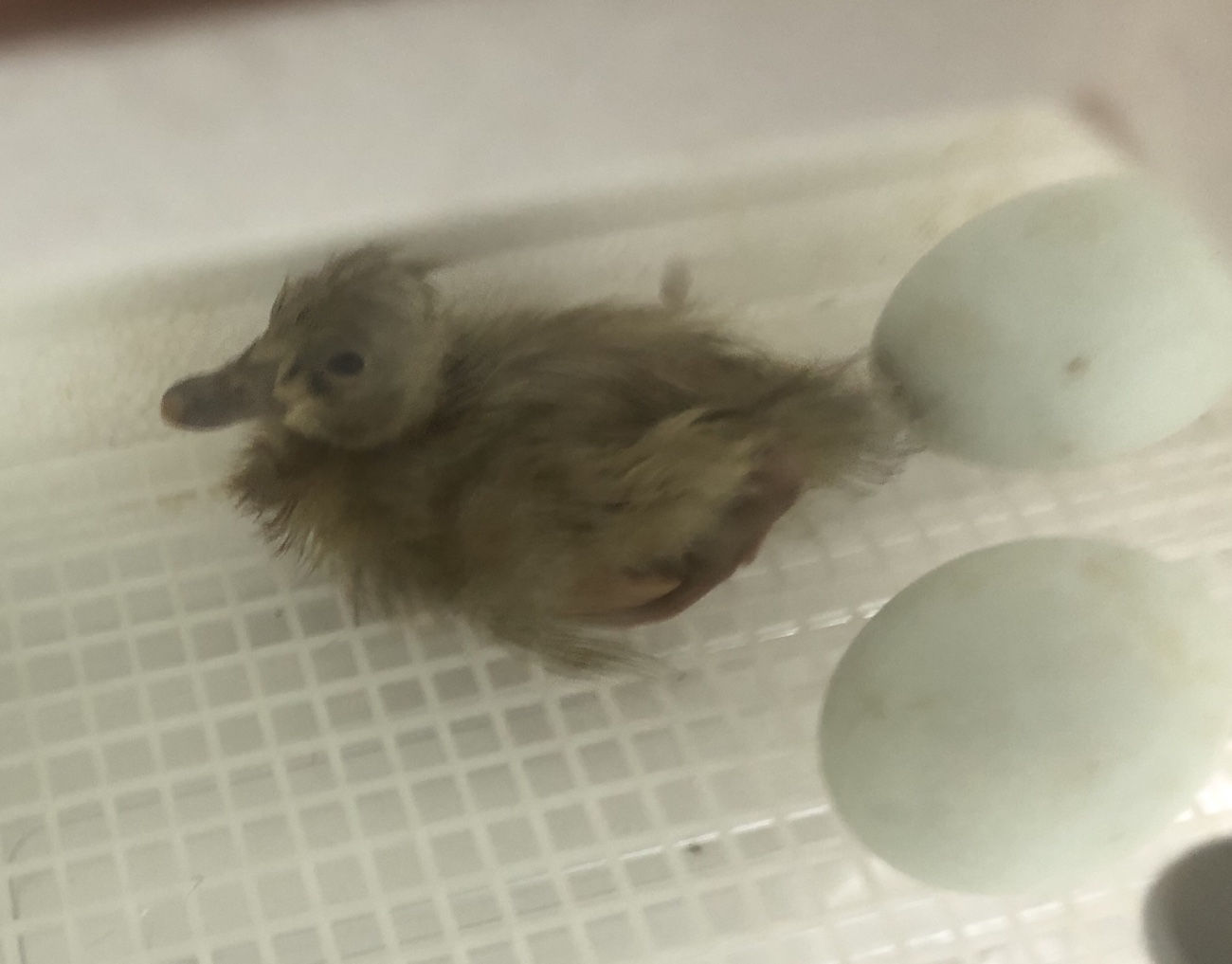
I hope that each of you will experience a tiny miracle today, and that your lives will be richer for it.

Comments are closed.